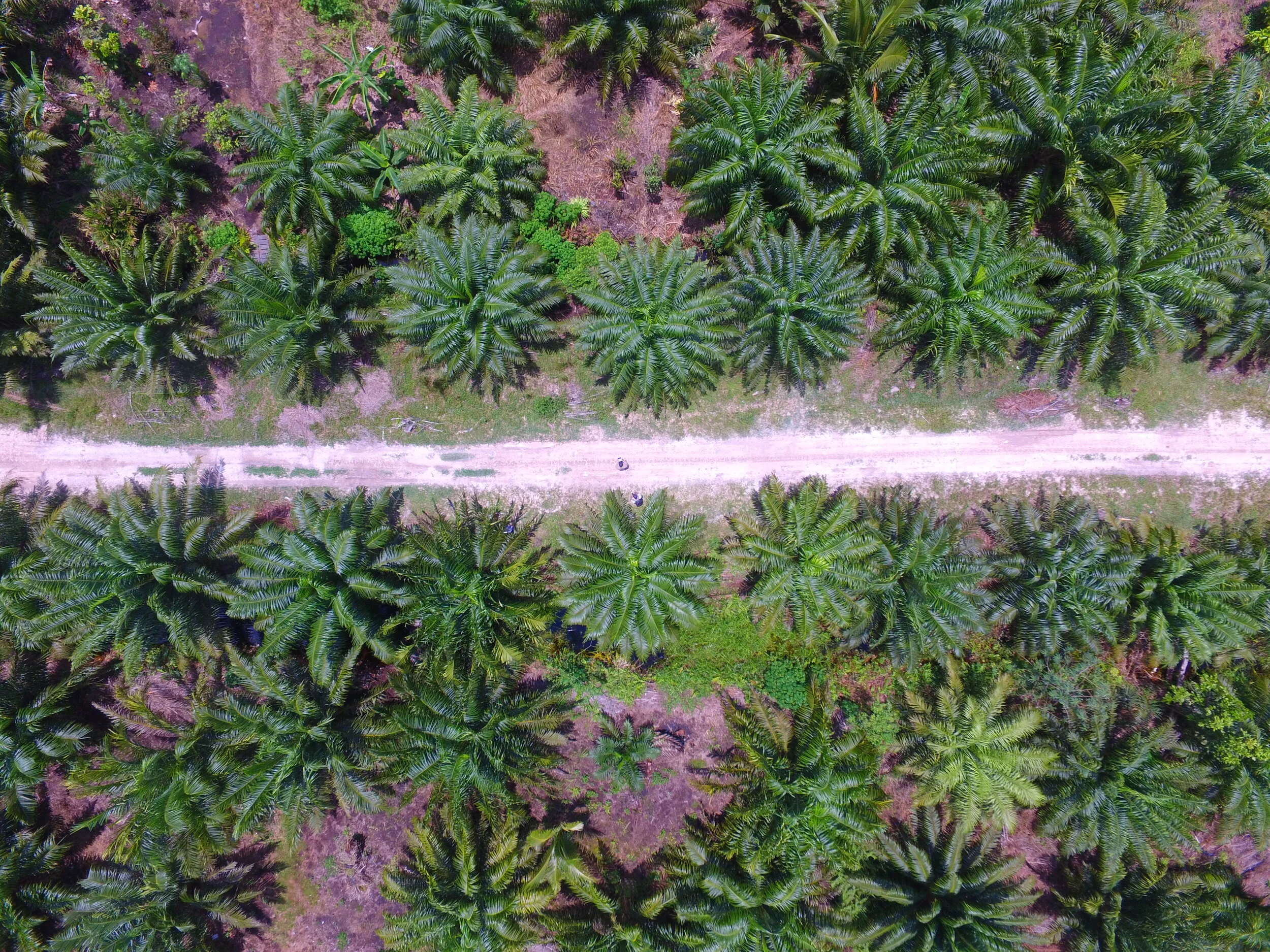THREATS TO ORANGUTANS
More than 30% of Borneo’s forests have been lost in the last 40 years and it’s due to the loss, degradation, and fragmentation of rainforest habitat that all three species of orangutan are classified as critically endangered.
Threats to orangutans include monoculture plantations such as oil-palm and soft wood plantations, logging, mining, forest fires and small-scale shifting cultivation as well as climate change. By 2080, if current trends continue, it has been projected that the Bornean orangutan will lose 70-80% of its forest habitat.
Climate change
Climate change presents a threat to all life on Earth. For orangutans, both increased temperatures and longer rainy seasons have altered fruiting patterns which can cause food shortages in rainforests. Standing forests, like the peat swamp forests in Borneo, store significant amounts of carbon. When this carbon is released by the destruction of forests, it can increase the severity of climate change.
Oil-palm plantations
Indonesia is the world’s largest palm oil producer. Palm oil is a type of vegetable oil produced from the kernels of oil palm trees.
Orangutan populations are threatened because their habitat, low-lying tropical rainforest, has been cleared and converted to oil-palm plantations.
Orangutans and the biodiversity struggle to co-exist with oil-palm plantations.
In recent years, fires have been used to clear land for the development of oil-palm plantations.
Logging
Logging concessions can sustain populations of orangutans when they are well managed. However, illegal logging has been a major and complex problem in Indonesia. Due to large-scale deforestation, Indonesia is one of the world’s biggest emitters of greenhouse gases.
Mining
In recent years, mining has caused irreversible damage to Indonesia’s forests. Illegal open cast mining for coal, gold and zircon in protected areas has turned the lush primary rainforest into barren and lifeless deserts. Mercury which is used in the mining process contaminates river systems, killing fish and other wildlife.
Forest Fires
Fires have been traditionally used for slash and burn farming (small-scale shifting cultivation). However, when the fires coincide with an El Nino year (which results in a longer than normal dry season) they can become out of control and lead to widespread wildfires. This is especially the case in peat forests as the organic material is extremely flammable and can be difficult to extinguish.
The wildfires of 2015 in Indonesia resulted in the loss of 2 million hectares of forest, an area the size of Wales. Fires destroy forests, kill and displace wildlife, emit huge amounts of carbon into the atmosphere and cause deadly air pollution. Unfortunately, they are becoming a larger threat because of climate change.
Human-Wildlife Conflict
Due to human development and forests shrinking, orangutans today are at increasing risk of human-wildlife conflict.
In the past, hunting has been responsible for the local extinction of orangutan populations. However, the orangutan is a protected species in Malaysia and Indonesia, and it is illegal to own, harm or trade orangutans in these countries.
To this day, many communities rely on rainforests for their livelihoods, however, farming practices such as ‘slash and burn’ can leave cleared habitat severely degraded, contributing to biodiversity loss and poor ecosystem health.
Learn more about our work with local communities to reduce harmful agricultural practises and human-wildlife conflict.








